Fortified schools: A sobering but growing response to U.S. shootings

It looks like a bank vault and is guaranteed to work, but Terry Shaw knew he had to test it for himself.
So the Oklahoma public school superintendent stepped inside the bulletproof storm shelter, roughly the size of a walk-in closet, closed the door behind him and sat down. Outside of the structure, a group of sharp shooters picked up their guns, took aim and fired.
"AR-15s, 9 mms, 380s, full metal jackets — they unloaded on us and they enjoyed it," he said. "It was a surreal feeling."
When he stepped back out, unscathed, Shaw was so impressed that he bought seven of the units for classrooms in his school system in Healdton, Okla.
Watch as Terry Shaw tests the bulletproof storm shelter, made by Shelter-In-Place:
The multilayer steel structures serve a dual purpose: They're primarily intended to provide shelter from tornadoes, but, by design, they also offer protection an ever-present threat in all American schools — active shooters.
With summer school now in session here, the shelters sit in the back of Shaw's elementary classrooms while his young students are put through drills to ensure they know what to do in an emergency situation.
When an alarm goes off over the PA system, the students drop their pencils and make their way into the shelter, in an orderly fashion, along with their teacher, who locks the door behind them.

The units come complete with a ventilation system and a TV camera facing outward, so they can see what's happening in their classroom while they're locked inside. Each unit fits roughly 30 people.
"If that inevitable event happens, where a bad guy's on campus, we've already taken care of that," said Shaw. "We've already put in the work to help protect as many kids as possible."
The $30,000 US price tag per unit is a fair price for peace of mind, he said, and the feedback from parents has been wonderful.
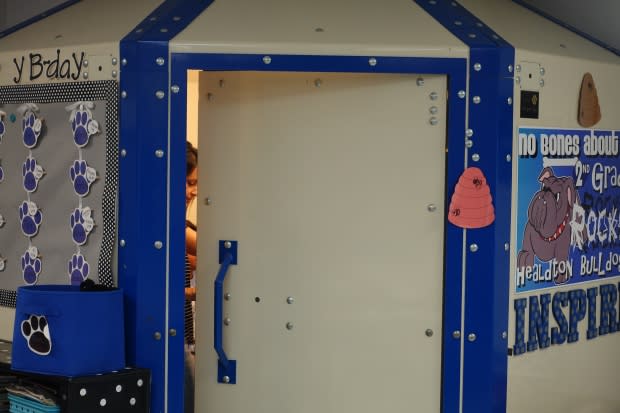
While school shootings remain statistically rare in the United States, there were 24 that resulted in either injury or death in 2018, according to Education Week, a journal that tracks education issues. This year, there have been 13 such incidents so far.
It's given rise to a school security industry now worth some $3 billion US annually, with many Americans eager to embrace anything that will keep their kids safe.
Gun safes and AI
At the International Security Conference and Exposition, the country's largest annual security technology convention in Las Vegas last March, vendors from around the world showed off the latest in school security tech.
On display was everything from biometric gun safes, unlocked only with a passcard and a fingerprint, allowing for guns deemed necessary for protection to be stored safely in classrooms, to artificial intelligence software for school security cameras, which can detect guns in the hands of potential shooters as they approach, immediately sending an alert to officials.
The gun-detection software was developed by former U.S. Navy SEAL Mike Lahiff, co-founder and CEO of the Philadelphia-based security company ZeroEyes. The goal, he said, is to stop shooters before they get inside a building.
"My wife's a school teacher," said Lahiff. "And I got tired of turning on the news and seeing active shooter events almost every week. It's disgusting. And there's not really a good solution out there."
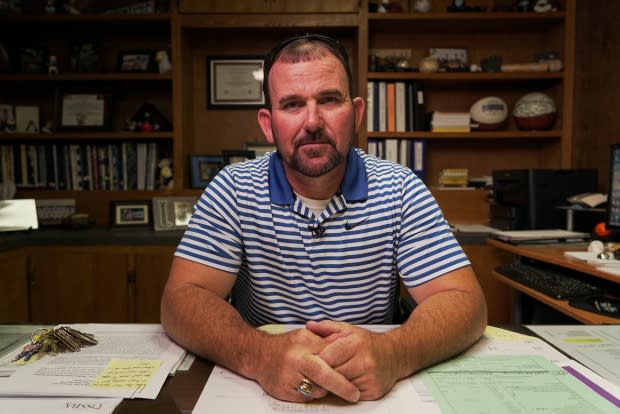
One of the featured guests at the convention was Guy Grace, who is head of security for Littleton Public Schools, a school district outside Denver. His security department is seen as a model for educators in the rest of the country.
Grace oversees nearly two dozen public schools, where he's installed roughly 1,100 security cameras. It's to protect students from "all hazards," he says, including burglaries and vandalism.
But the threat of a so-called active shooter remains the priority.
"If nothing is done, we would have more school shootings," said Grace, who also chairs a security advisory association called Partner Alliance For Safer Schools.
"We would have more suicides, we would have more negative actions taking place on campuses. It would be tremendously worse than where it is right now."
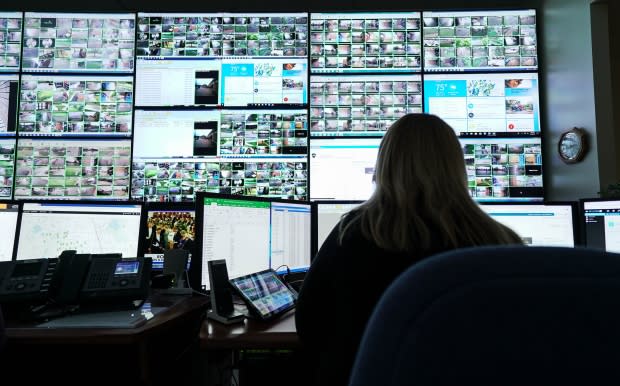
Critics say the push toward this so-called "hardening" of schools is driven in large part by the security industry itself, stoking fear to make a buck.
But Grace counters that in his school district alone, there have been two school shootings in the past six years, leaving three dead and eight injured.
Right next door to Grace's district sits Columbine High School, where 12 students and one teacher were shot dead in 1999. To this day, uniformed police regularly station themselves outside Columbine in response to continued threats of gun violence.
'Gun laws aren't changing'
Lauren Reese, a mother of two whose children attend schools in Grace's district, was a 15-year-old student at Columbine on the day of the shooting 20 years ago. Today she's an advocate for strengthening school security.
"In a sense, this is the world we live in now," she said. "Gun laws aren't changing, and regardless, if there's a law in place or not, if someone wants to get a gun, they're going to get a gun."
Reese credits Grace for keeping her kids safe. "I feel safe knowing [he's] watching over them and that he really does want to protect our kids," she said.
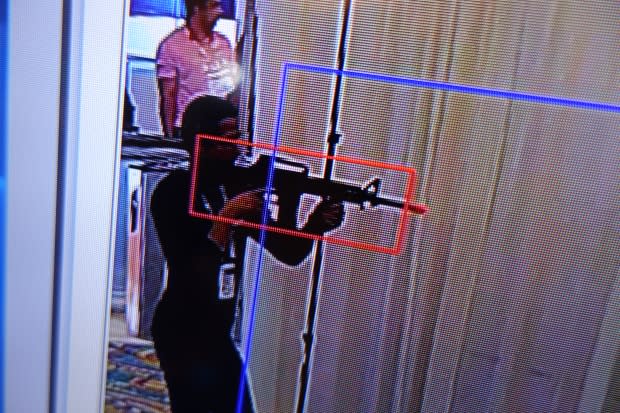
But one key concern for some is whether too much security can have an adverse effect on students.
Dr. Christina Conolly, director of psychological services for Montgomery County Public Schools in Maryland, emphasizes the importance of that.
"The goal of school security is not just to go and make … schools look like prisons. The goal is to find a balance of both physical and psychological safety," she said. "Too much security can lead kids to sometimes feel anxious and nervous."
It's a line Grace is careful not to cross, saying he believes in keeping security measures in the background as much as possible.
Along with all the cameras in his schools, the classrooms come equipped with emergency alarm buttons. But those are hidden underneath teachers' desks, kept out of sight for students.
And although Grace doesn't like to mention "guns" or "shooters" when he runs emergency drills with his students, it's clear that kind of threat is certainly the implication.
While conducting a safety exercise on an elementary school playground earlier this month, an alarm went off, prompting the students to immediately run and hide behind anything they could find — trees, curbs, hillsides.
"It's giving them some confidence to make sure that they're not living in fear," Grace said.
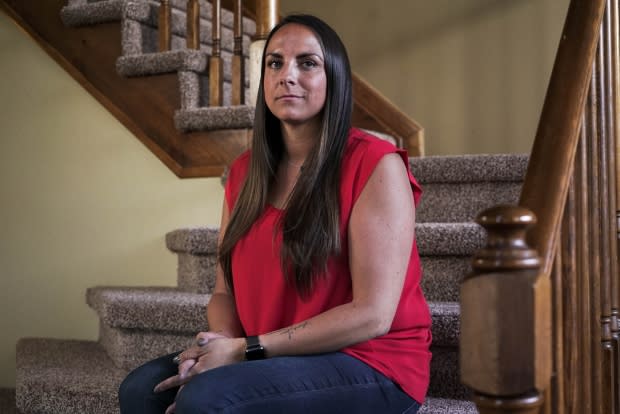
Back in Oklahoma, Terry Shaw agrees, saying such lessons are a sobering but necessary part of schooling in the U.S. today.
"When you're faced with a problem, I think it's our job as parents, administrators and humans to deal with that problem," he said.
"I hate the fact that our society is at [this] point. But that's where we're at."
Watch Paul Hunter's full report into the big business of school security:


